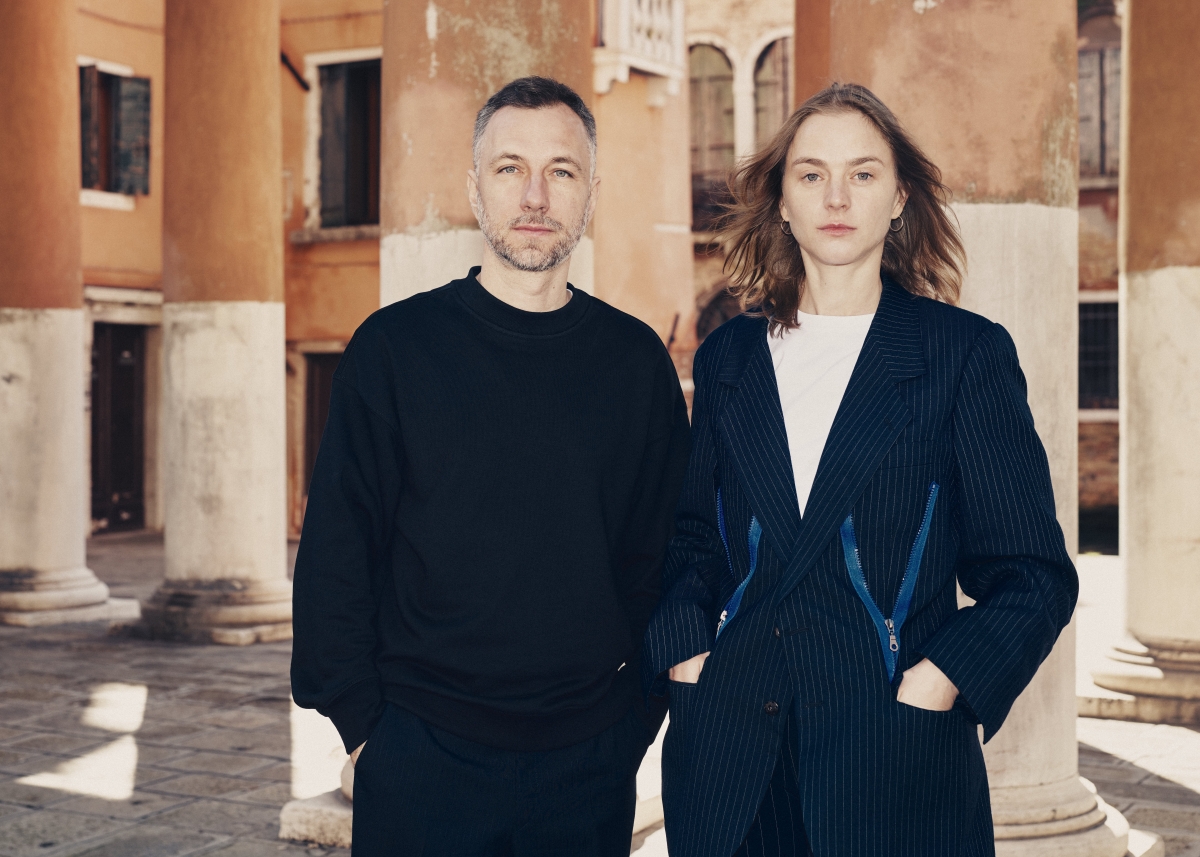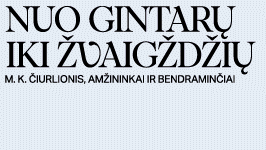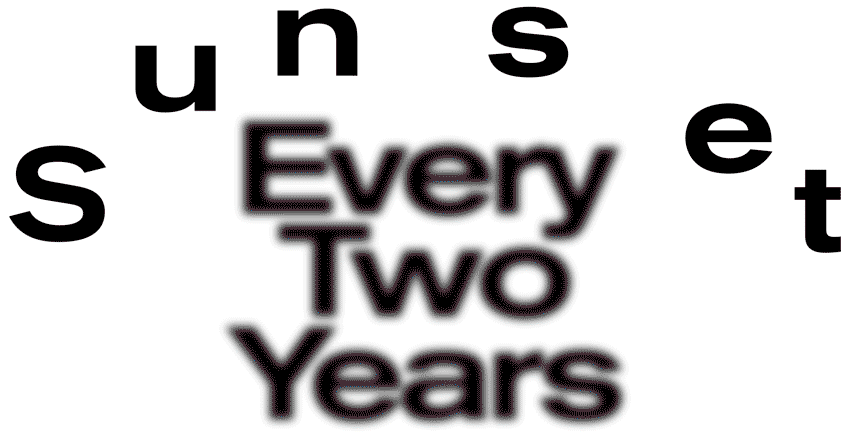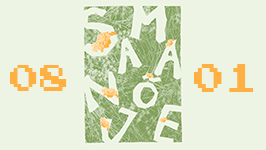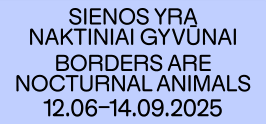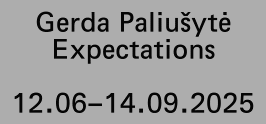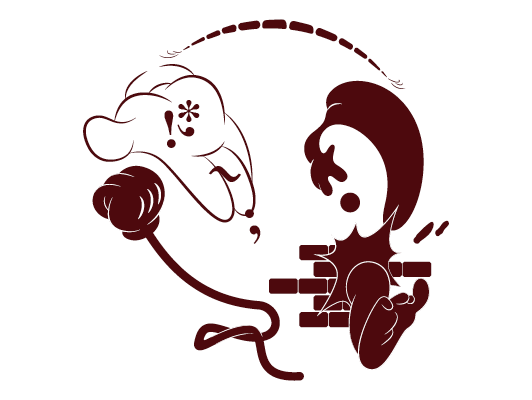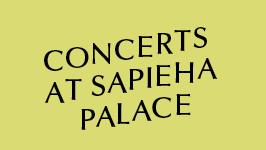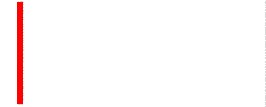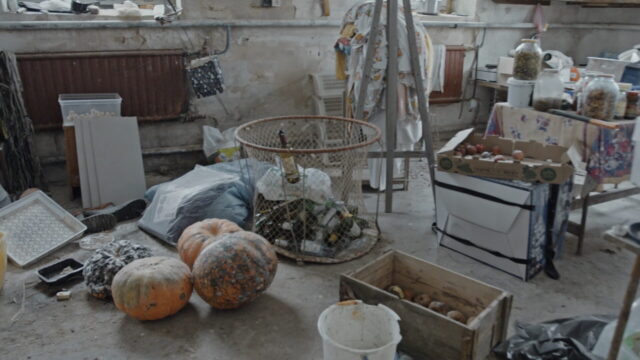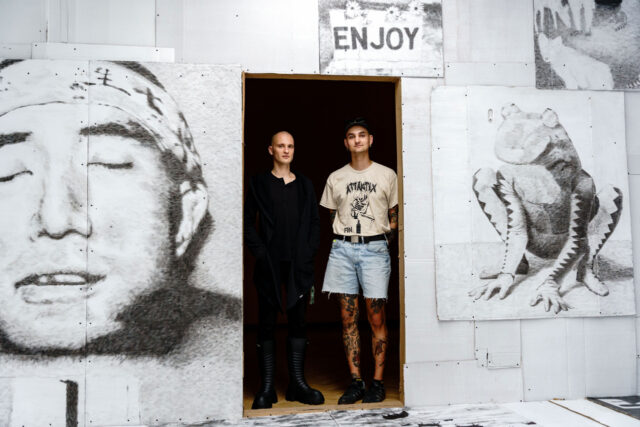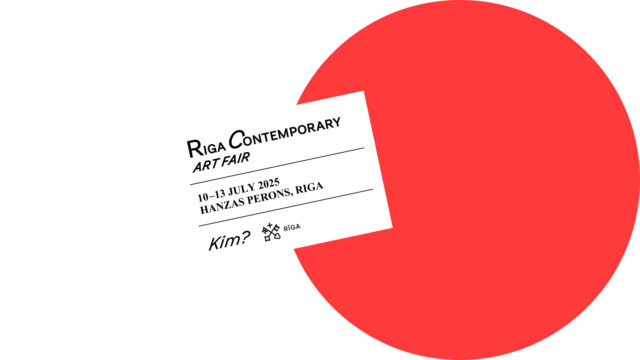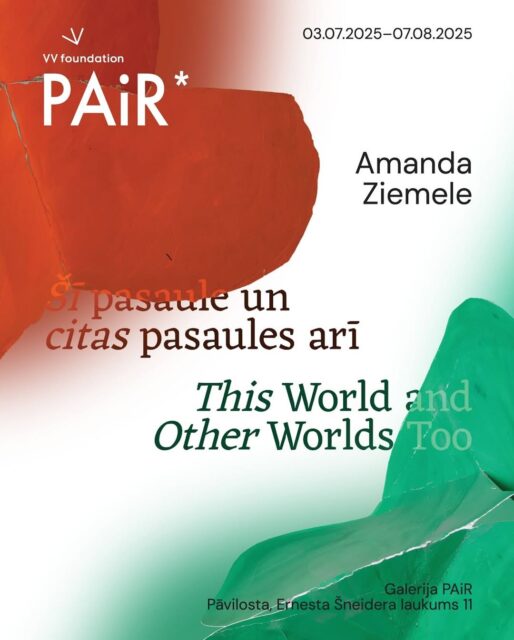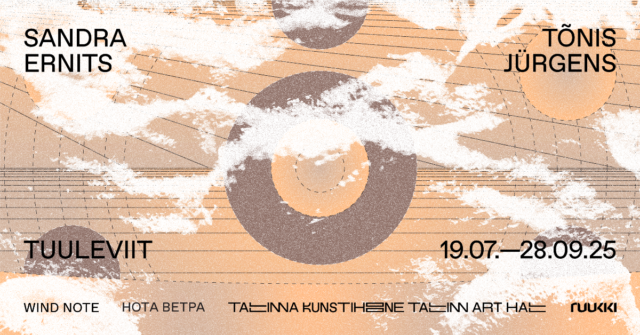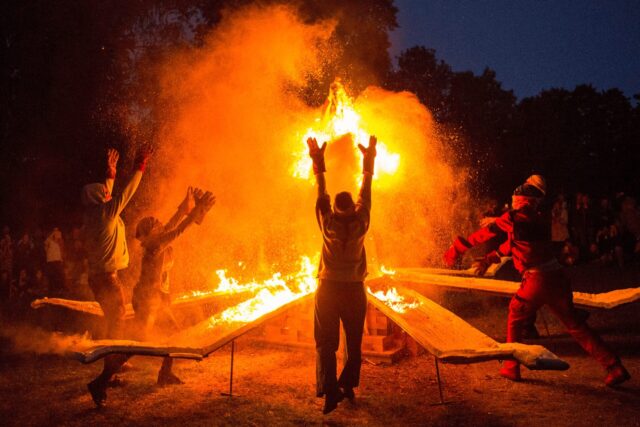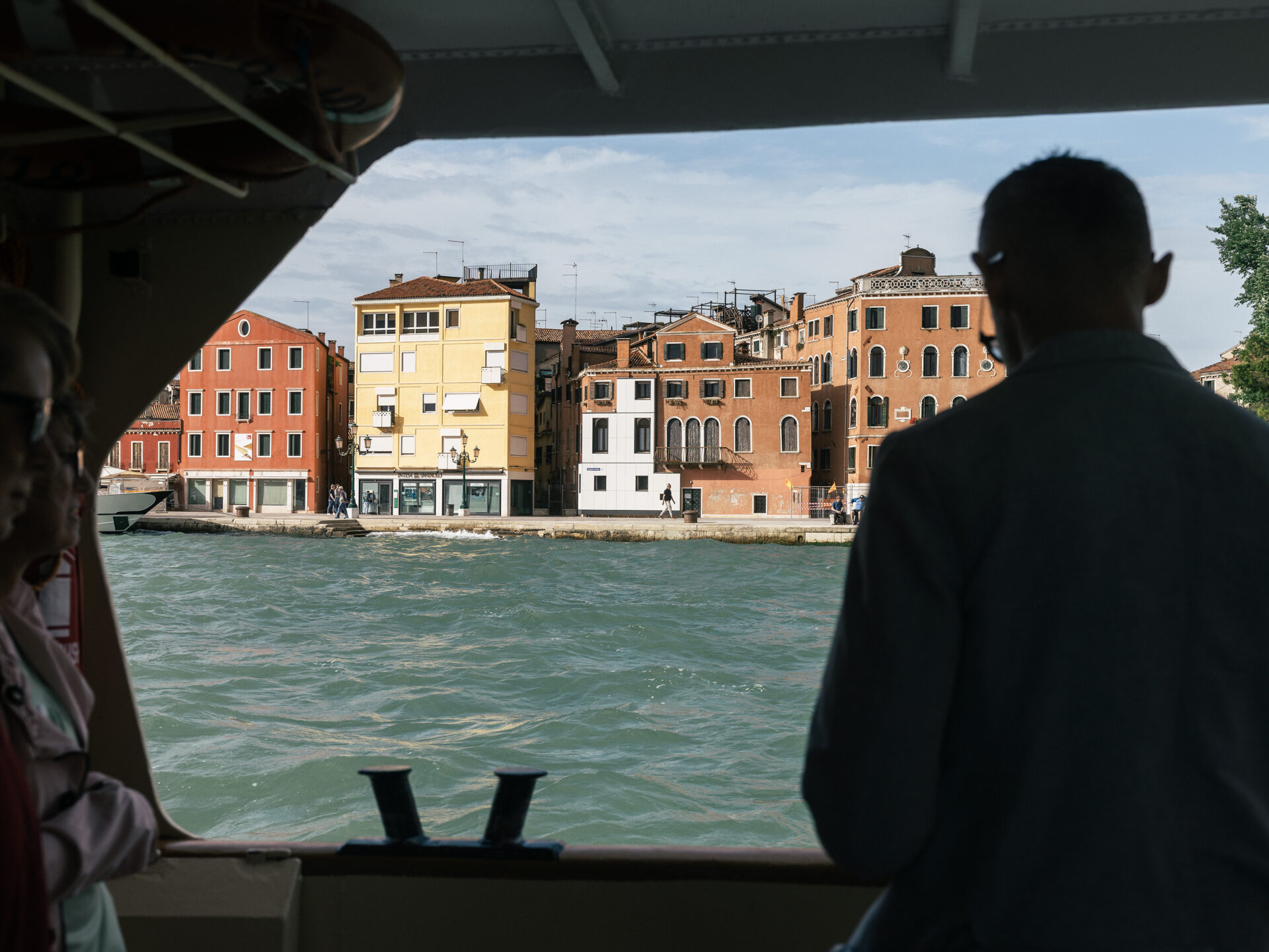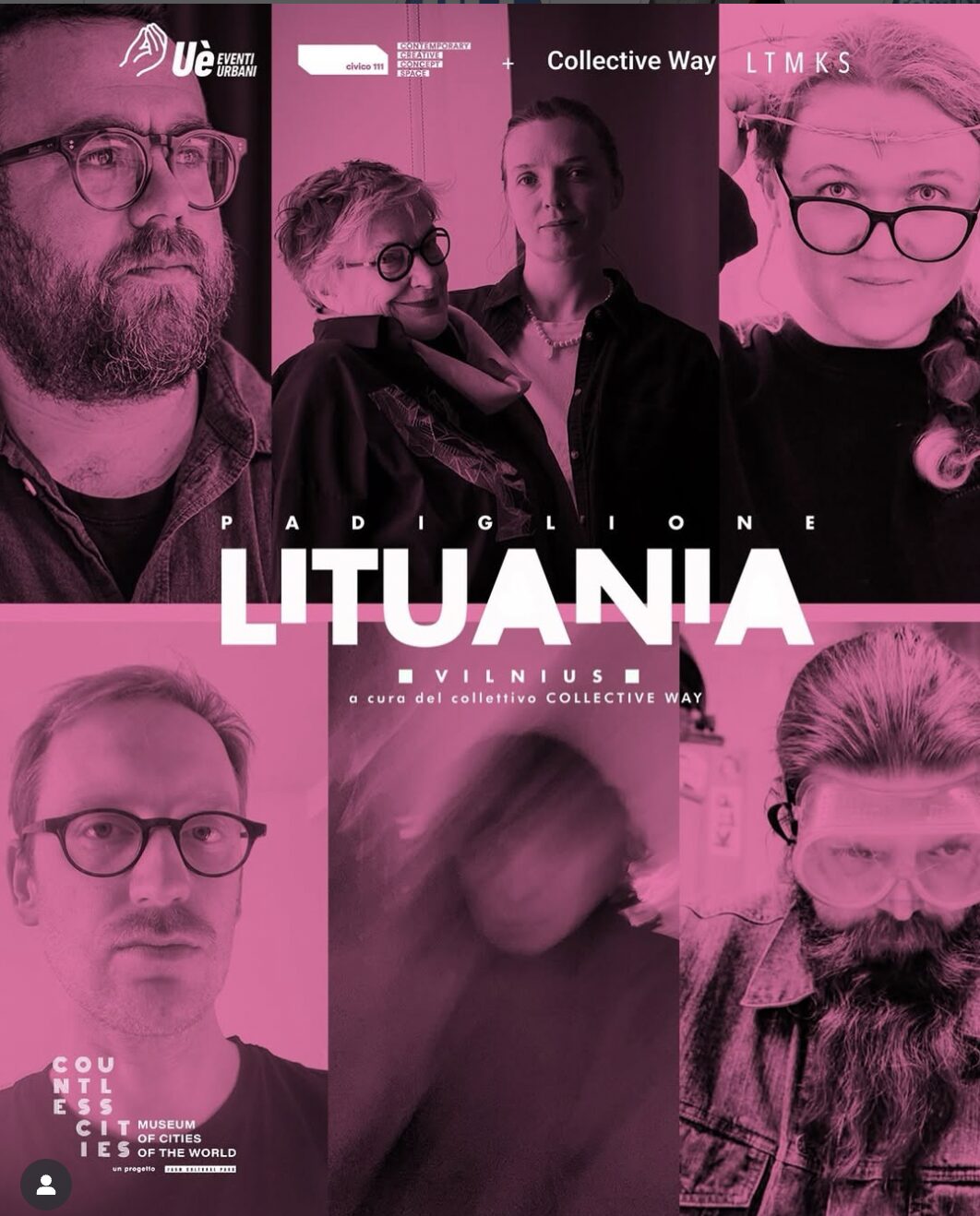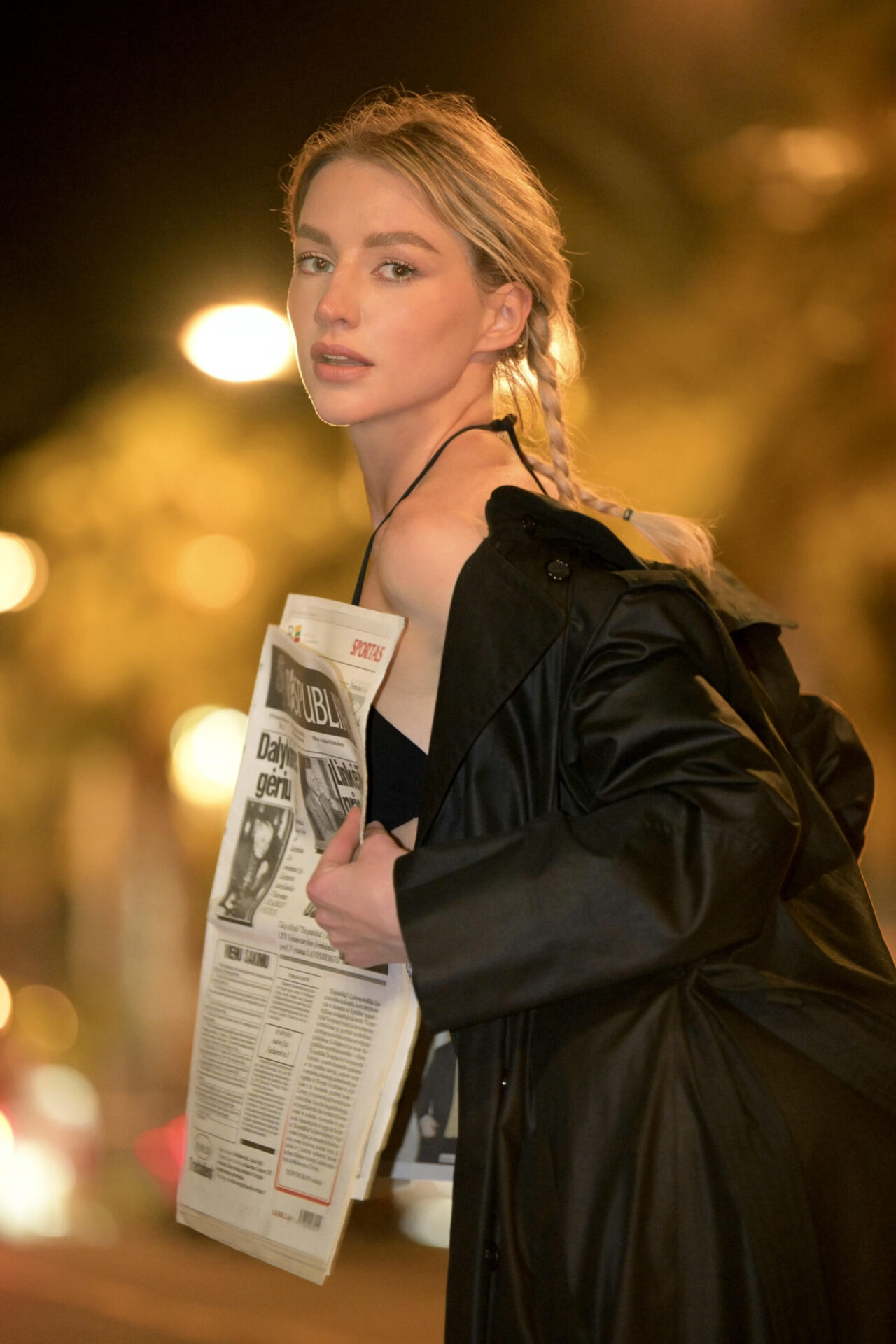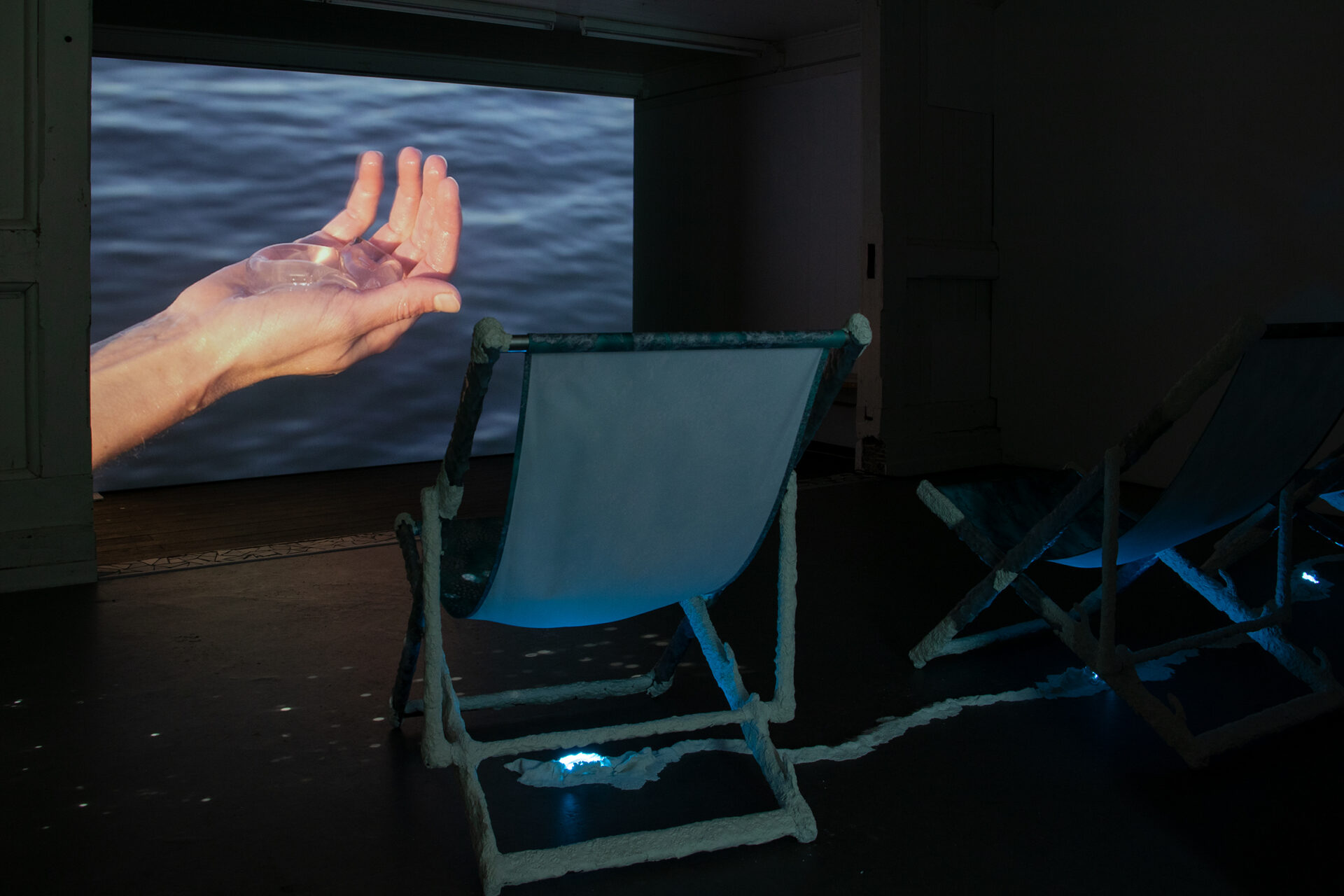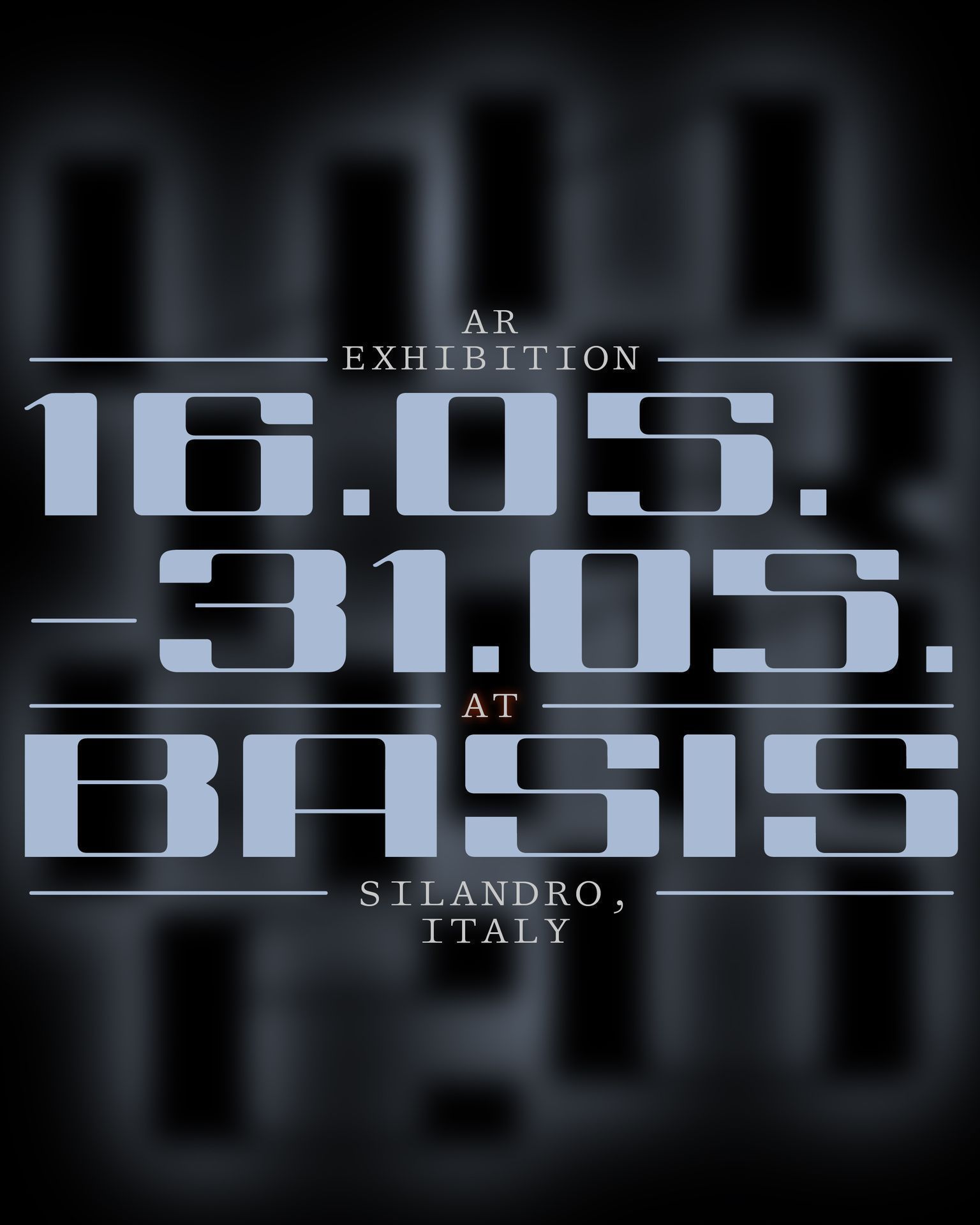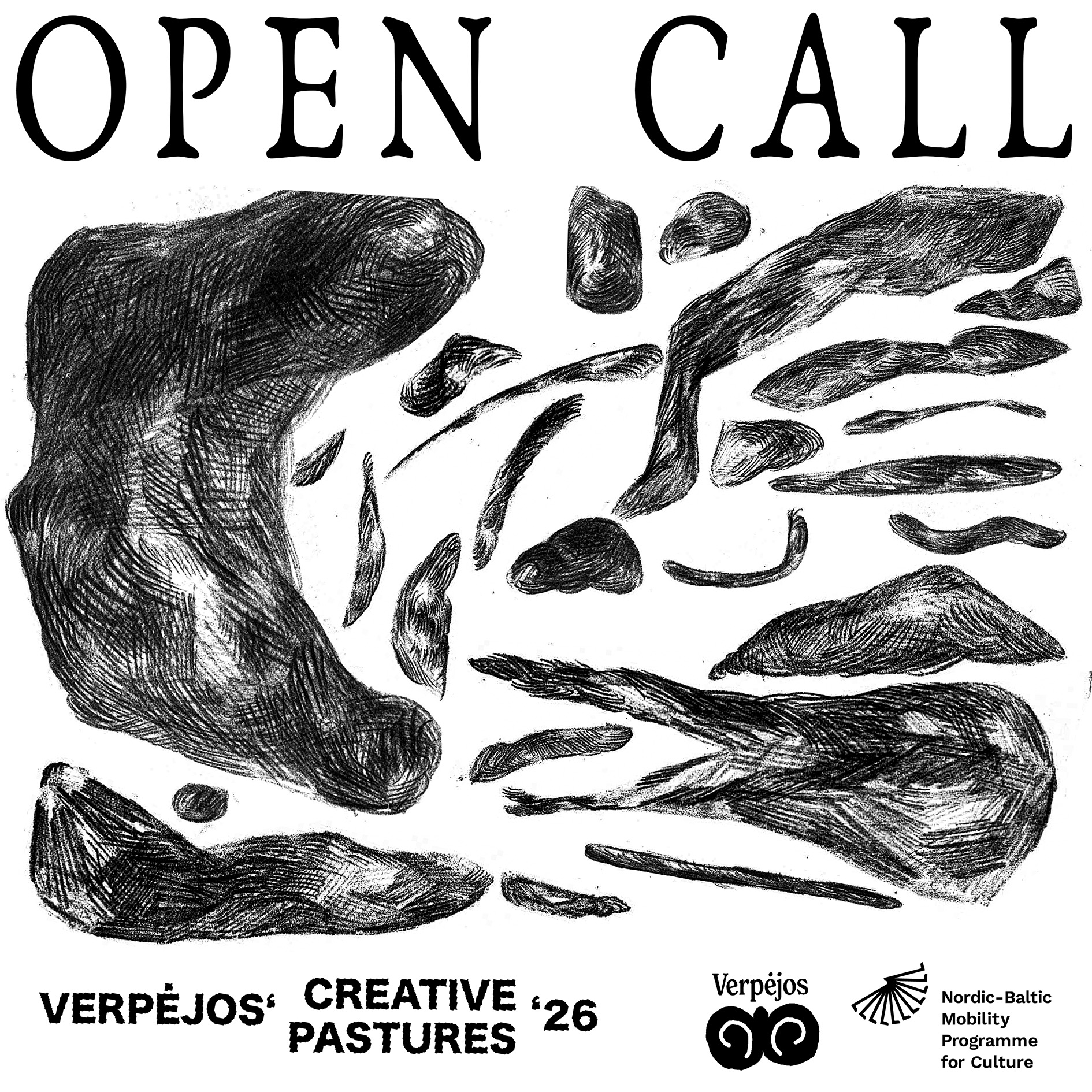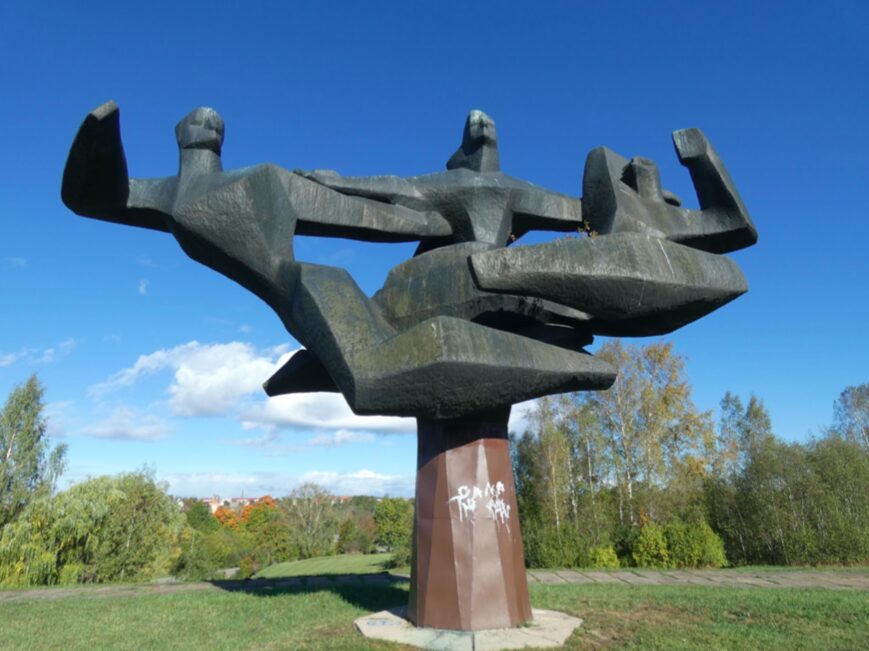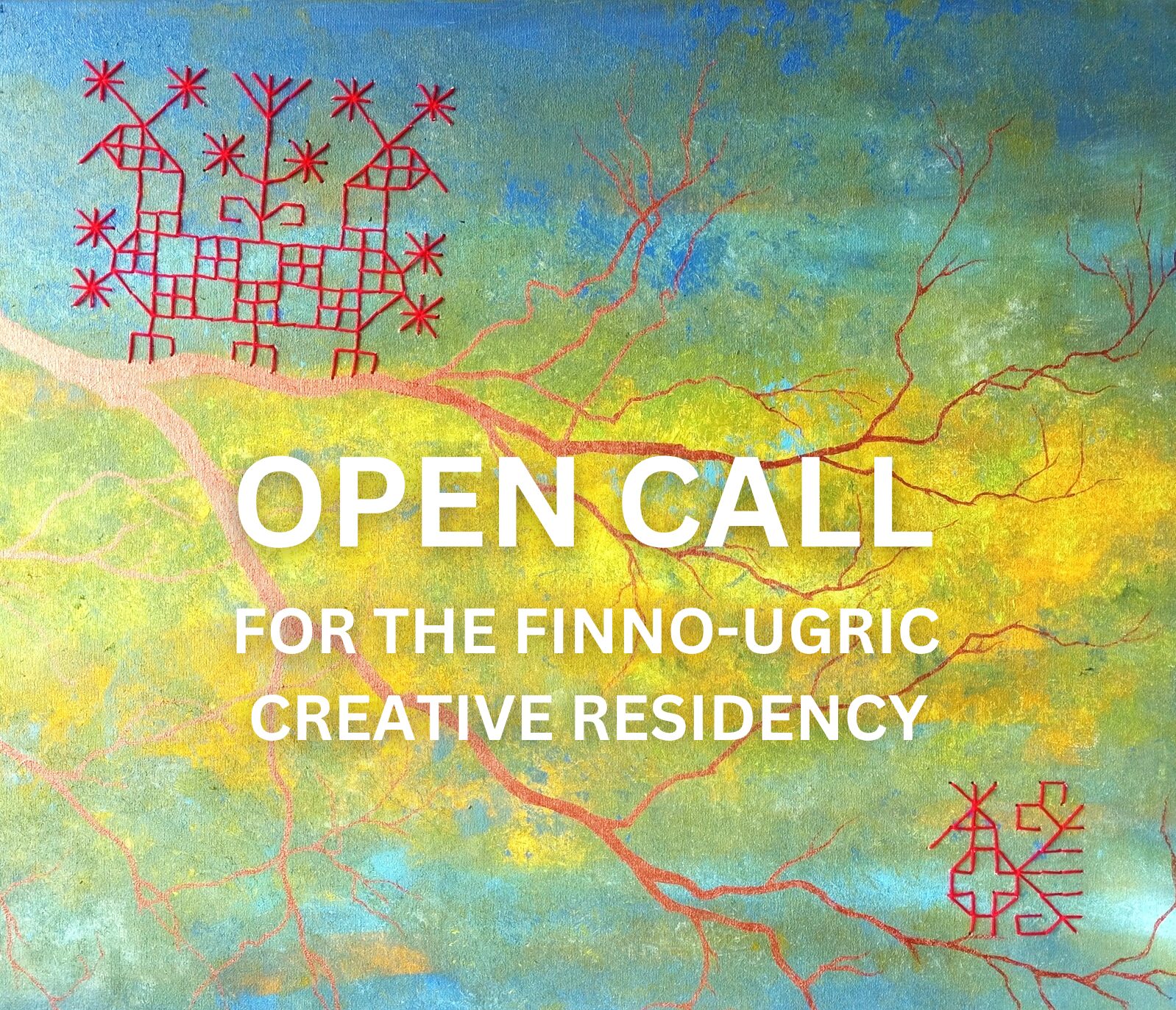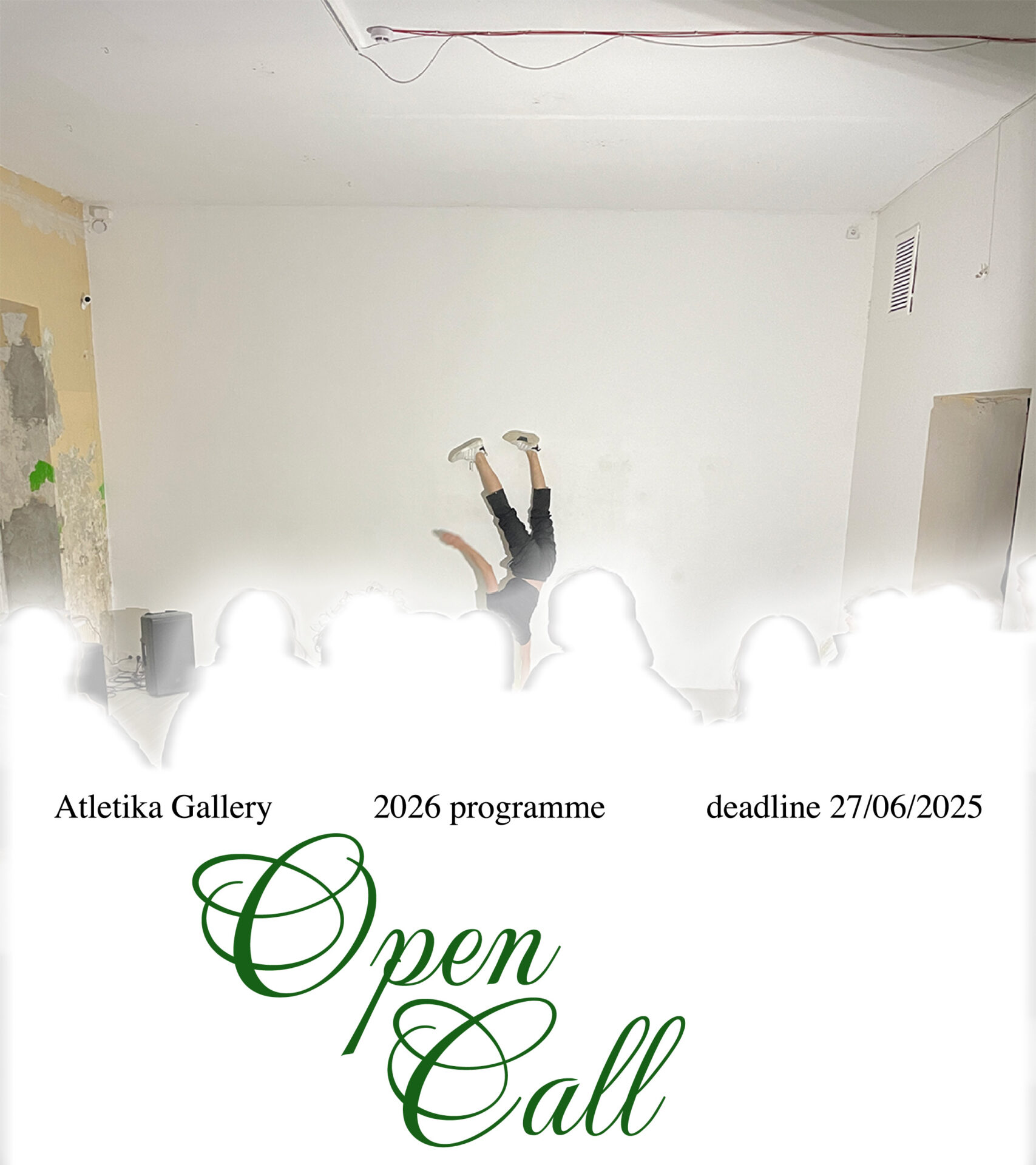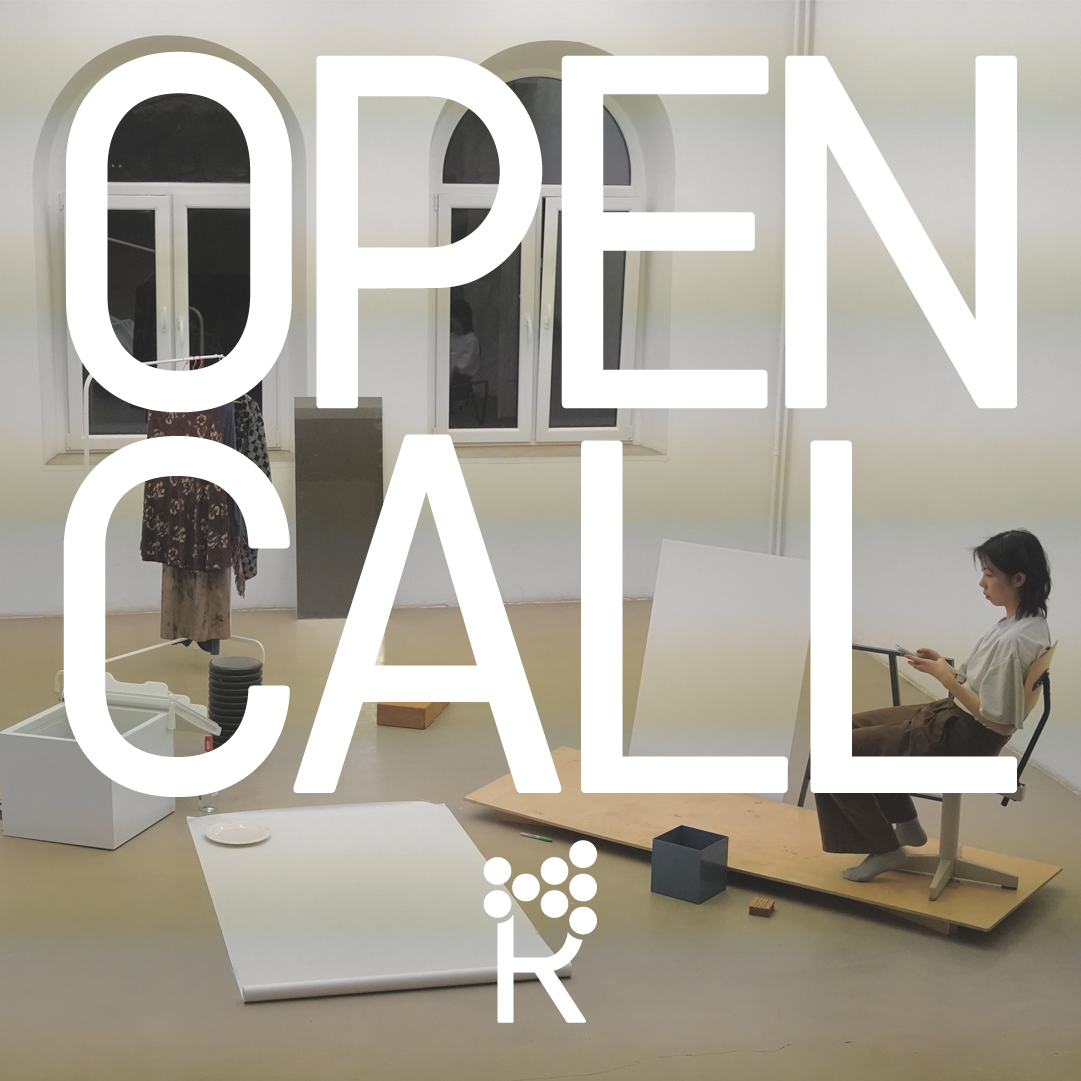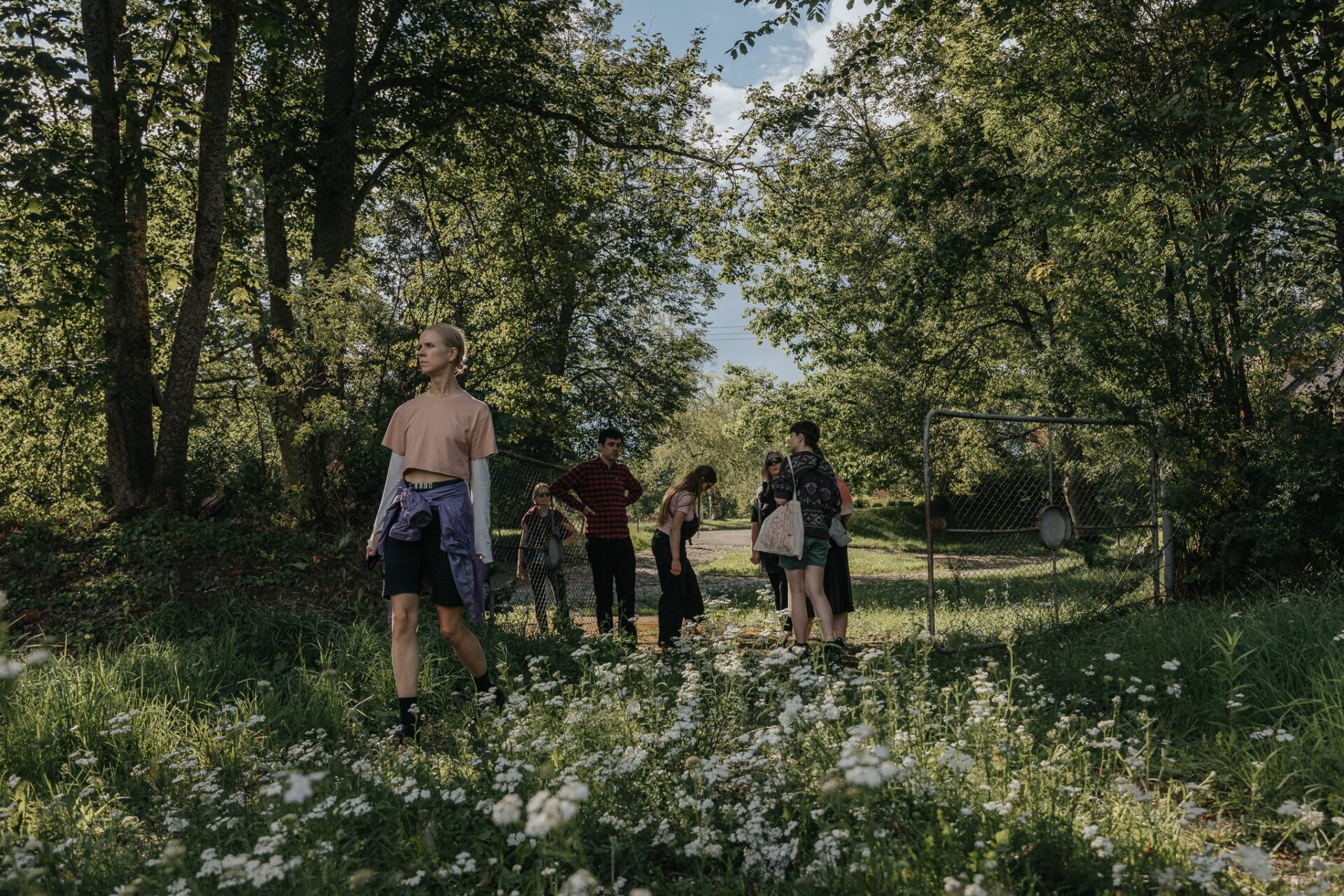Inflammation is an acute and complex reaction of the body to damage done to it. When facing danger, the body not only fights against the harmful agent, but also undergoes inevitable structural changes that are reminded of by scars even after the body has recovered. One might think that the history of mankind, littered with wars and crises, is in itself a chain of inflammatory reactions, the scars of which do not have time to heal, because new wounds keep opening.
On 19 April, at the 60th Venice Art Biennale, at the Church of Sant’Antonin, ‘Inflammation‘, the national Lithuanian pavilion by Pakui Hardware (Neringa Černiauskaitė and Ugnius Gelguda) and Marija Teresė Rožanskaitė (1933–2007), opened its doors. During the preparation of this interview, it seemed as if Venice itself was reminiscent of a feverish planet: the artists mentioned that during the installation of the works of art, repeated reports of impending flood kept coming in. And it was certainly not the first, as is evidenced by the pavement of the pavilion’s church affected by salt corrosion. At the same time, blood is flowing painfully in Gaza and Ukraine: it’s scary to imagine what kind of scars they will leave for future generations. Nevertheless, according to the duo Pakui Hardware, inflammation is also the first step towards recovery.
Deimantė: We are talking at a busy time between two significant events this year: the closing of the two-part exhibition ‘Inflammation’ at the Museum of Applied Art and Design (MAAD) in Vilnius, and the opening of the Venice Biennale, where you will present the pavilion of the same title. The exhibition which was held in Vilnius attracted vast crowds of visitors and was repeatedly called a dress rehearsal for the trip to Venice. How did the Lithuanian surge at ‘Inflammation’ serve in preparing for the biennial?
Pakui Hardware: Several previous Lithuanian pavilions have also presented their projects in Lithuania in one form or another before shipping them to Venice. In our case, the circumstances were such that we were able to ‘rehearse’ the Venetian pavilion in Vilnius under exceptional conditions: in the colossal hall of the MAAD Arsenal, which is three times larger than the space of the Church of Sant’Antonin, where we are currently ‘growing’ the installation. This dress rehearsal was significant, first of all, because an audience who did not have the opportunity to go to Venice could experience the installation (only without the paintings by Marija Teresė Rožanskaitė) in an exceptional environment and on an unusually large scale. It was precisely the audience’s corporeal experience, and sharing their experience with us and the entire pavilion team, that helped us to make certain decisions relating to the installation, in order to make it more accessible to a broader range of visitors. Of course, numerous spatial or conceptual changes were also caused by the new location, the Church of Sant’Antonin, which has a unique architecture and history. In Vilnius, during interviews and live meetings, while constantly talking about ‘Inflammation’, new conceptual and contextual threads gradually emerged which we had not even noticed before. We have woven them into the ‘fabric’ of the pavilion in Venice.
Deimantė: The feverish world is not only the theme of your pavilion, but also a painfully appropriate metaphor for our times. The theme of the 60th Venice Art Biennale, ‘Foreigners Everywhere’, was announced back in June 2023, and less than a year later it seems even more acute when thinking about the situations in Gaza and Ukraine, while observing in real time the inefficiency of international organisations and the radical polarisation boiling up in the public discourse every day. All this inevitably affects the art community as well: we are anxiously watching the widespread cultural censorship in Germany, hearing calls to boycott the Israeli artist Ruth Patir’s project on modern motherhood, called the ‘genocide pavilion’. At the same time, the systemic problems of the Biennale itself are alluded to, which, for example, reflect architecturally the 20th-century legacy of the colonial system (the permanent pavilions in the Giardini Garden in Venice are only owned by countries that could afford it in the last century), and raises questions about the efforts of the organisers of the event (or the lack of effort) to rethink the structure of the Biennale in such a way that it reflects the geopolitical context of today. These issues are closely related to the criticism of colonial thinking, as well as the exploitative political systems and patterns of capital flows that are often mentioned in your work. How do you get to maneuver in these times, while both maintaining respect for your own critical thought and being aware of the politically tense situation in the field of art and the problematic context of the Venice Biennale itself?
Pakui Hardware: First of all, you need to be honest with yourself: if you feel that the actions of others, or your own, do not let you sleep, because you keep doubting their fairness, then something is wrong, and you have to go in a different direction. In addition to this rather emotional response to global and local events, it is, of course, also crucial to be actively interested in the historical and geopolitical contexts of those events, which allows us to respond more adequately to what is happening, or to the pressure of one or the other side to lend them support. In any case, the last few years have taught us that being politically ‘neutral’ is a privilege that is directly proportionate to the accumulation of power and capital.
Indeed, we are immensely grateful to the artists who participated in our exhibition series ‘Reclaiming Resilience’, which we curated last year at La Casa Encendida in Madrid, and for sharing the pain they and their communities have endured through conversations and discussions, afflictions caused mainly by the expansion of the Western world. Their personal experiences and the embodied knowledge of the history of their regions allowed them to delve into and understand the harm of past and present predatory actions more sensitively. At the same time, during these discussions, we also shared our experience regarding the imperialist consciousness and the actions of the great ‘neighbour’, as well as problems that are probably inevitably waiting in the future. Thus, several substantial common denominators were discovered during the preparation of these shows.
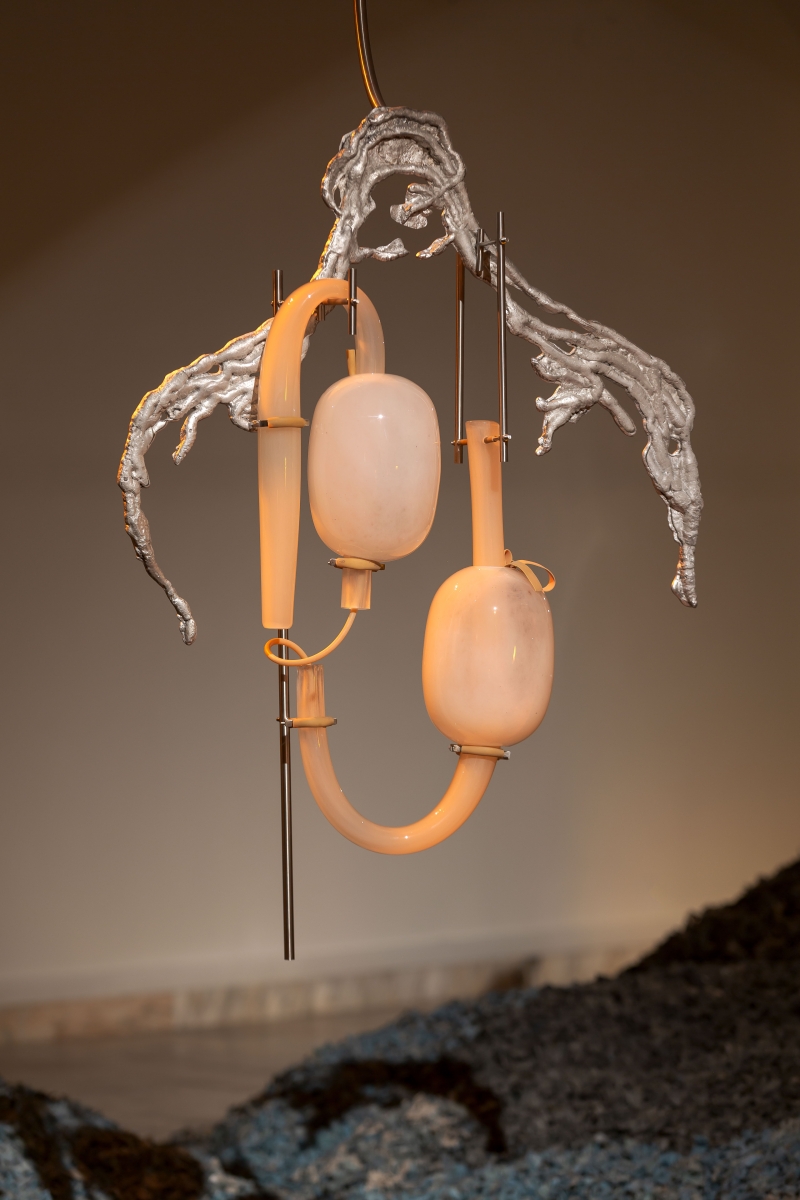
Pakui Hardware, Inflammation. Photograph courtesy of Ugnius Gelguda and Neringa Černiauskaitė.
Deimantė: In Inflamed: Deep Medicine and the Anatomy of Injustice (2021), Rupa Marya and Raj Patel describe inflammation as a metaphor for the systemic damage that both humanity and the planet suffer from. In response to toxic conditions, the body develops a fever, which may be considered both a symptom of the disease and a way for the body to protect itself. At what point is it worth making a distinction between illness and the possibility of recovery today?
Pakui Hardware: At the establishment of the correct diagnosis. If we recognise that a physical ailment of the human and planetary body is the result of the systematic exploitation of natural and human resources, this is already the first step towards recovery. If we dig deeper into this systematic damage and find that it was created by the development and consolidation of artificial differences between mind and body, man and nature, the ‘civilised’ Westerner and ‘the Other’, and so on, we will take another step towards ‘reducing the heat’. Finally, by erasing those artificial boundaries and realising the interconnectedness of everything, and the integral participation of so-called ‘others’ (in the broadest sense) in our embodied lives, perhaps we will stop focusing on individual hurts, and effectively begin the process of ‘healing’. It’s truly a long way ahead! But, as the authors of the book you mentioned show, and what we try to emphasise in our installation, it is possible. However, it is painful, especially for those who will need to give up certain privileges that have accompanied them from generation to generation.
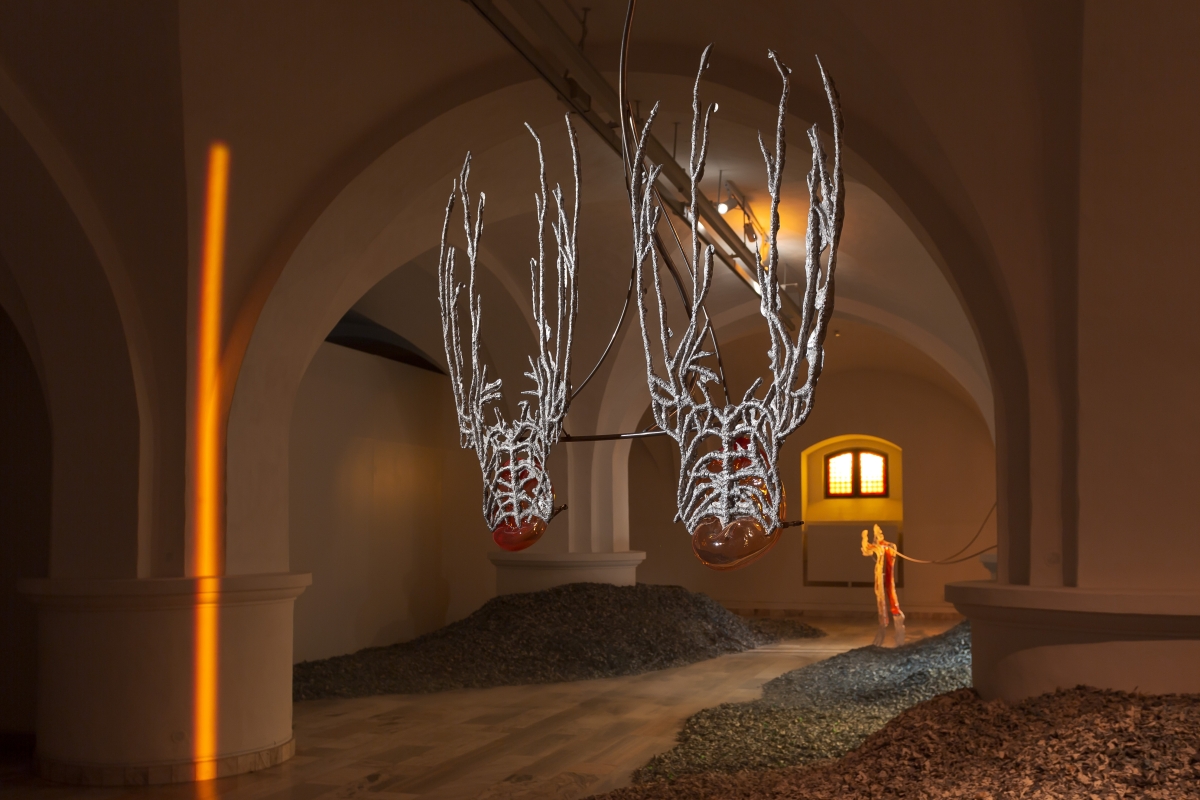
Pakui Hardware, Inflammation. Photograph courtesy of Ugnius Gelguda and Neringa Černiauskaitė.
Deimantė: The idea of ‘Inflammation’ is often presented as a speculative, alternative vision of the future, and your duo’s work is referred to as liberating from the usual scenarios of the future and exposing their relativity. However, in creating a speculative future, you dig into history and its recurring vices, especially colonialism. I’m curious to ask, what happens to colonialism in the future of ‘Inflammation’? Does inflammation itself become a planet-colonising entity?
Pakui Hardware: Inflammation is not a colonising power; inflammation is a product of that power. Perhaps it is important to note that the inflammation in itself, both medically and metaphorically, is a very natural process that leads to healing. It is true that when the body is already continuously exposed to particular environmental or genetic ‘stressors’, inflammation becomes chronic, goes off course, and starts raging. Marya and Patel discuss this exact state of human and planetary bodies in their book.
What happens to colonialism in the future? It should be decided not only by those who suffered from it or are still suffering and fighting against it, but also by those who still keep profiting from it or creating new forms of colonialism. Will the idea of expansive growth be abandoned to prevent a planet shuddering with inflammation from destroying us?
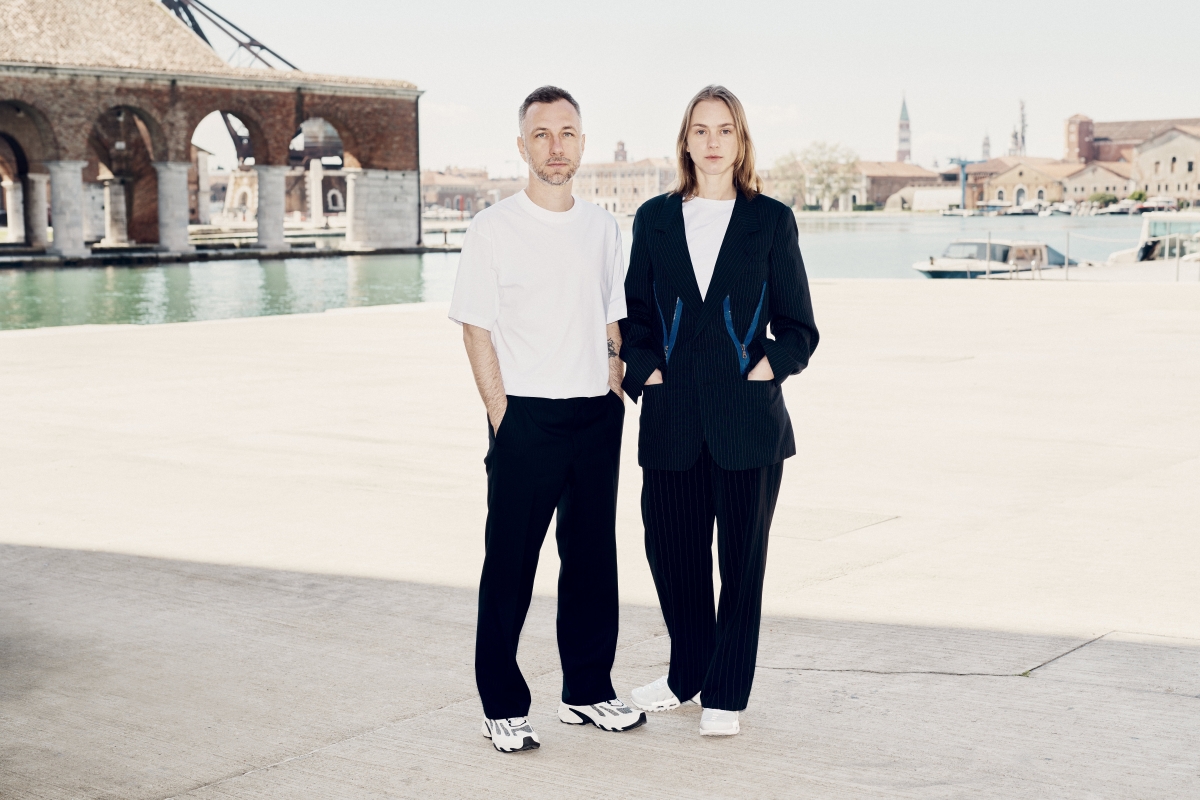
Pakui Hardware (Neringa Černiauskaitė and Ugnius Gelguda). Photograph courtesy of Visvaldas Morkevičius.
Deimantė: In addition to the concept of inflammation, in 2023 you also delved deeply into the meanings of another word that is relevant nowadays, ‘resilience’, and, as you mentioned, you curated the exhibition series ‘Reclaiming Resilience’ at the La Casa Encendida in Madrid. Although inflammation is, in a way, the body’s resistance mechanism, it is incapable of combating toxic systemic injustices. Have encounters with female artists who analysed resistance changed your perception of the function of inflammation in today’s context?
Pakui Hardware: The experiences of the artists who participated in the series of exhibitions unquestionably contributed to very particular, personal examples of ‘inflammation’. However, another aspect is also important, which perhaps did not correct so much as merely confirm the line of thought we developed both in this pavilion and our previous work: systemic or historical oppression is not only a crushing trauma. It is also one of the factors for the emergence of a certain concentration and empowerment of the community. Such empowerment is only possible in the first place by looking critically at the cosmology that exploits those communities or lands. Like the artists Dominque White, Monia Ben Hamouda, Naomi Rincon Gallardo and Bianca Bondi, who choose non-Western, or at least non-European ‘enlightenment’ age cosmologies, mythologies, or stories as sources of empowerment, with ‘Inflammation’, we invite you to name the causes of the fever and search together for a different mutual understanding and another way of being together. Maybe after colonialism, we will finally reach a convivialism that is generous to each other.
Deimantė: Lithuania does not have a fixed place at the Venice Biennale for its pavilion, so this year your project will be in the Church of Sant’Antonin. This church dedicated to St Anthony has a curious connection with the architecture of your pavilion, as St Anthony is called the ‘father of the desert’, and the terrain of ‘Inflammation’ consists of hybrid dunes of industrial and organic materials, and a wasteland of organs that run a fever. It is even somewhat ironic that the church in Venice has been flooded several times, as is evidenced by the crumbly pavement affected by salt corrosion. From cataclysm to cataclysm. How did you choose this particular location for the pavilion? How did the history and architecture of the church influence the very idea, architecture, and maybe even the general atmosphere, of the ‘Inflammation’ pavilion?
Pakui Hardware: This church is truly special! For the opportunity to have the pavilion’s installation in this very place, we are incredibly grateful to the commissioner of the pavilion and the head of the LNMA Arūnas Gelūnas, thanks to whose confidence and belief in the installation and its team, as well as his perseverance, the curia has allowed the first national pavilion in this space. The architects of the exhibition, Ona Lozuraitytė and Petras Išora, adapted the elements of the Vilnius installation to the new spatial conditions, one of the most important of which is the impressive height, and the ban on touching the interior surfaces of the church. In this way, an independent tracery structure emerged, contrasting in its technological nature, but connecting with the historical environment of the church via the colonnades. An important role will be played by the light dramaturgy created by Eugenijus Sabaliauskas and his team, as well as a new component, a pulsating sound element that ‘scans’ the bodies of the audience and the environment.
By the way, the history of this church is curious not only because of the story of the saint but also because of another, less well-known, but no less important, character in terms of the pavilion: an elephant that died at the hands of man right in this church! According to the story, this elephant, brought to the Venice carnival in around 1818 as exotic ‘entertainment’, escaped while being put back on the ferry, and wandered through the labyrinths of Venice, until eventually breaking into the Church of Sant’Antonin, where it was unfortunately shot dead. Therefore, the human consciousness conquering other species has also shown its killing ‘power’ in this space.
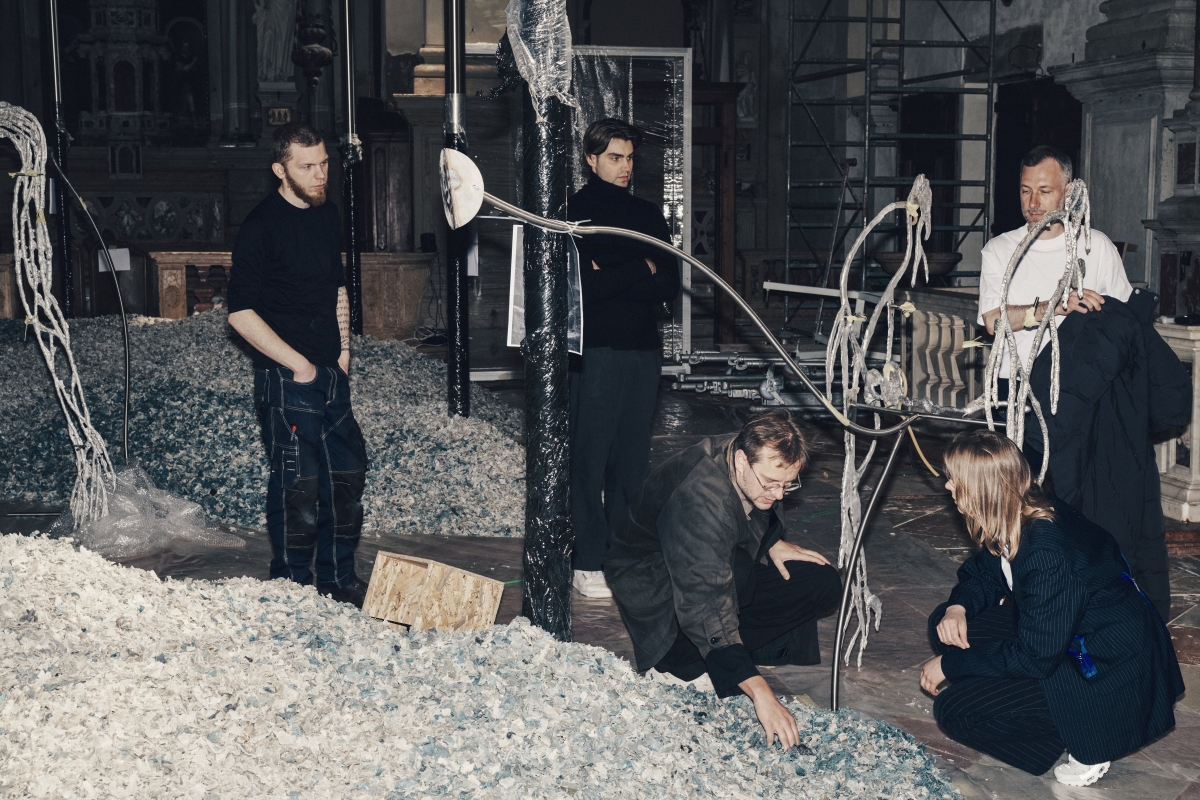
The installation process in Venice. Photograph courtesy of Visvaldas Morkevičius.
Deimantė: Your decision to exhibit your work in the pavilion with Marija Teresė Rožanskaitė’s paintings, in which medical information becomes a separate language, often incomprehensible and repulsive to those who are examined and placed in the hands of medical professionals, or rather devices, is an exceptionally respectful and elegant move. It would be hard not to see the thematic similarities with your projects Virtual Care (2021), Absent Touch (2020) and The Host (2021), which also analysed the icy techno-capitalist invasion of the living body. However, with Rožanskaitė’s work, a new, semiotically interesting combination moves for the first time into the cosmology of Pakui Hardware: organs without a body, and a body with opened, damaged or even removed organs. I want to ask a double question: how is Rožanskaitė’s approach to the body and medicine similar to yours, and how does it present an entirely different perspective?
Pakui Hardware: We referred directly to the work of Marija Teresė Rožanskaitė’s medical series in the ‘trilogy’ you mentioned, which examines scenarios in which the bodies of the patient and the doctor, nurse or surgeon do not meet directly, and care, treatment or surgery is carried out with the help of technology. It is partly about the ever-deepening rooting of technology in various fields of medicine; and at the same time it is questioned whether replacing the human hand with a technological one necessarily leads to only negative changes and relationships. So, although in Rožanskaitė’s work her ability to convey certain states or feelings through the representation of parts of the human body and the technology surrounding or penetrating them is fascinating, we nonetheless have a more ambivalent relationship with the assessment of technology. For Rožanskaitė, technology was primarily a tool that depersonalises a person and breaks into his inner space. In other words, evil itself. In our work, we constantly emphasise technology as a single element in a broader network of actors: who creates this technology, who finances it, who instrumentalises it, who militarises it, and where does it lead? Perhaps in this pavilion we are talking not about technology, but the states of bodies; however, this pulsating tension will acquire new oscillations in the installation.
In the installation, the sculptures also refer to the fragmentation of the body, only this time of a nervous system, cast from flexible aluminium, still seemingly flowing on the surface of the sculptures. In these three-dimensional drawings of nervous systems, elements of pulsating red glass are suspended in the air, with the help of prosthetic stainless steel structures or poured through aluminium holes. In some places, medical tubes emerge and disappear in the glass cavities. All these elements can also be found in Rožanskaitė’s paintings, chosen together with the curators.
Deimantė: The inflammation of Rožanskaitė’s time is a self-poisoning political system that, while demonstrating its supposedly insurmountable technological and medical superiority, in a sad irony, was also characterised by the rather short life expectancy of its citizens. What is the function of Rožanskaitė’s work in the context of ‘Inflammation’? Are they memory triggers, or perhaps self-fulfilling prophecies?
Pakui Hardware: Rožanskaitė’s works of art in this pavilion work in several ways. First, by abstracting bodies or presenting them as nearly being swallowed by medical technology, the artist demonstrated not scientific progress that was inseparable from the political regime at the time, but the consequences of that ‘progress’: depersonalisation and growing control. Therefore, the introduction of that era into the general narrative of the pavilion indicates the instigators of the inflammation, which came from a different geographical latitude than the West. Rožanskaitė’s work allows us to talk about oppression and transgenerational trauma caused by a country that is rarely, if ever, mentioned when talking about the damage caused by imperialist or colonialist thinking to the lands and communities of others.
Together with the curators, we deliberately chose works by Rožanskaitė which depict cosmic compositions: abstract, anxious landscapes. Thus, we have another thread connecting the human and the planetary scales. In the late period of her work, the artist started paying considerable attention to ecology, and began making earth art installations, so this connection between human and natural organisms is not artificially created for this pavilion only.
Deimantė: The duo of Pakui Hardware and Rožanskaitė is not the only duo involved in shaping the creative vision of this year’s Lithuanian pavilion. The duo of the architects Petras Išora and Ona Lozuraitytė also contributed to ‘Inflammation’, as well as the team of curators, including Valentinas Klimašauskas and João Laia, and after all, Pakui Hardware is also a duo, consisting of you two, Neringa and Ugnius. Arūnas Gelūnas, the commissioner of the pavilion, has called this abundance of duos a synergistic flow of intertwining voices and experiences. How has the vision of this project changed in this polyphonic flow since the initial application for the pavilion?
Pakui Hardware: Indeed, there was no lack of polyphonic synergy! In general, it is vital to mention that projects on such a scale as the exhibition held in Vilnius or the preparation of the pavilion are primarily the result of collective efforts and enthusiasm. Artists are, in fact, never alone, although sometimes it seems that way, so we try to emphasise this in all our interviews. The vision of the pavilion, quite interestingly, has not changed drastically, and all essential elements have remained: a hybrid landscape, a group of sculptural objects, and Rožanskaitė’s paintings exhibited in special display cases. However, what will distinguish the pavilion from the Vilnius exhibition most is that the church space dictated the decision to replace the mechanical kinetics used in the MAAD exhibition with spatial movement created by sound and light choreography. The MAAD Arsenal space, with its column ‘ribs’, provoked the movement of sculptures around the space, where they sometimes hide behind the columns, only to suddenly appear again to the viewer in other places. In the church, we wanted to take advantage of the specifics of the architecture: huge windows, the dizzying height, and the mood of abandonment.
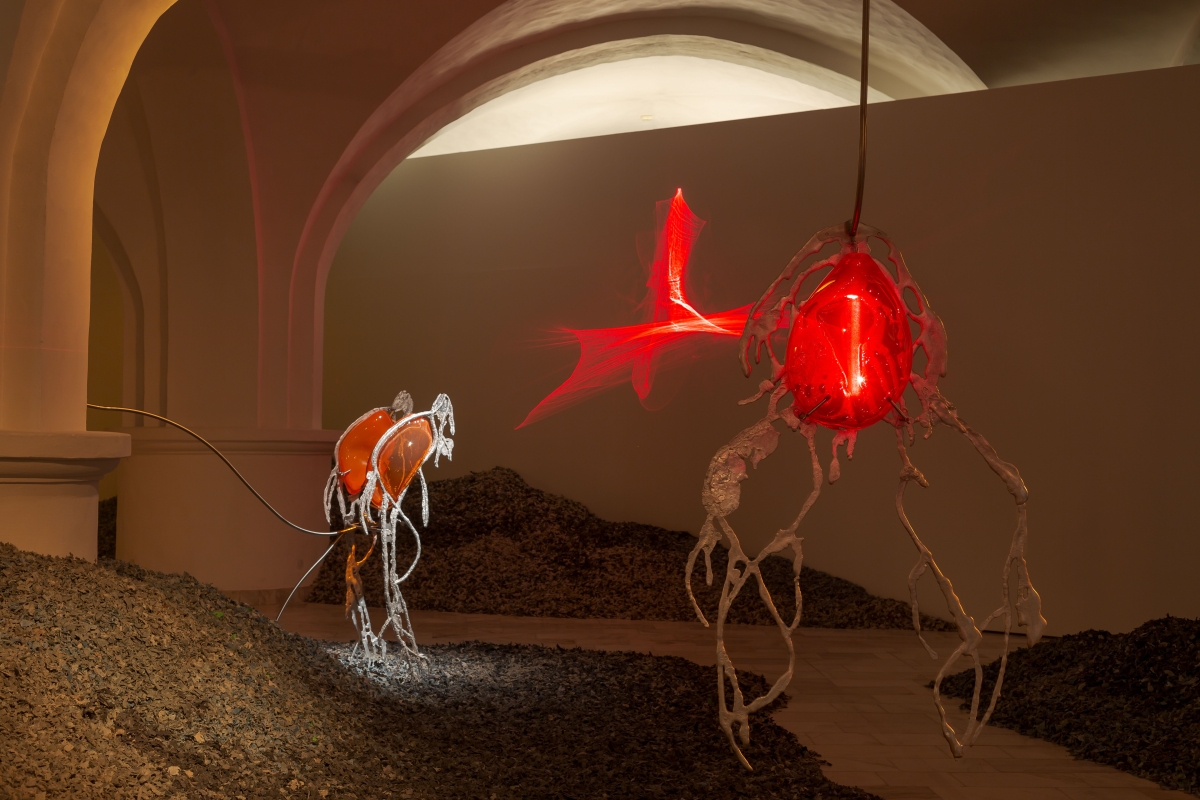
Pakui Hardware, Inflammation. Photograph courtesy of Ugnius Gelguda and Neringa Černiauskaitė.
Deimantė: The curator Valentinas Klimašauskas writes that ‘Hope is as chronic a condition as inflammation,’ because even in our darkest hour, we can see its healing potential, no matter how naive it sounds. What kind of hope will visitors to the ‘Inflammation’ pavilion, which opens on 19 April, take with them?
Pakui Hardware: Each visitor will probably take away a unique reading of this pavilion, which will be created not only by the installation but also by their personal experiences and cultural baggage. Maybe someone will find the ideas of the book that inspired the pavilion familiar, while others will identify with the ‘inflammatory processes’ of our region. But we very much hope that whatever complex issues this pavilion attempts to disentangle, involving the audience in the process with all the stories they embody, it also offers a compass that shows where one should move towards brighter horizons. By abandoning a myopic expansionist and extractivist approach to our environment, realising that we are all connected at the cellular level, and using or learning from cosmologies where the elements of nature have equal personal status, perhaps we can maintain the hope that the chronic inflammation will gradually subside.
